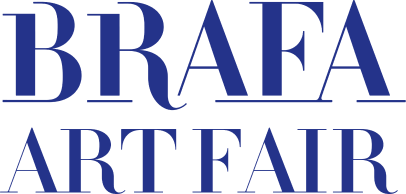

Maison D'Art - Themed exhibition @ BRAFA 2026

17/11/2025
Maison d'Art will present the following exhibition at BRAFA titled 'True to Life'. Usually we refer to 'truth to life' when we’re speaking about fiction in writing or the visual arts. Of course it depends on what your definition of truth is, not to mention life itself, which is sometimes inscrutable (certainly in dreams). People looking at paintings in the 15th, 16th and 17th centuries saw the subjects before them as a reflection of different kinds of truth: literal verisimilitude, as we see here in the paintings of Gentileschi and Ribera, who sought to depict the whole truth and whose fascination with naturalism was expressed through a blend of close observation and stunning pictorial technique.
In the Quattrcoento and Cinquecento – the great era of the Italian Renaissance – a holy image would bring the truth of faith into the home, as our Tuscan and Ferrarese panels once did for their fortunate, devout owners. The lively and sweetly melancholic Virgin and Child of the 1470s, the Holy Family by Foschi (recently exhibited in the Accademia, Florence), reflecting the energetic style of sixteenth-century Florentine art, and the intimate Adoration of the Shepherds by Garofalo, with its refined sense of colour – all these pictures offered reassurance in a period of growing doubt.
Painting could also illustrate subjects on the border between literature and allegory, as in Lomazzo’s Boat, which has great poetic truth even if its meaning continues to perplex scholars. Contemporary with that enigmatic work (around 1570), Giovanni Battista Della Porta’s statue of a woman in rosso antico evokes one of the oldest truths, the great era of Classical Antiquity, in which the idealized life of the gods is expressed in the finest way possible, through the human form.
Centuries ago, life was generally shorter and less predictable than it is now, and art always offered reassurance – as it should now. Living with these paintings and sculptures, sharing them, enjoying them, is still the greatest pleasure.
Marietta Vinci-Corsini
Pier Francesco Foschi (Florence, 1502-1567), The Madonna and Child and the Infant Saint John the Baptist.
In the Quattrcoento and Cinquecento – the great era of the Italian Renaissance – a holy image would bring the truth of faith into the home, as our Tuscan and Ferrarese panels once did for their fortunate, devout owners. The lively and sweetly melancholic Virgin and Child of the 1470s, the Holy Family by Foschi (recently exhibited in the Accademia, Florence), reflecting the energetic style of sixteenth-century Florentine art, and the intimate Adoration of the Shepherds by Garofalo, with its refined sense of colour – all these pictures offered reassurance in a period of growing doubt.
Painting could also illustrate subjects on the border between literature and allegory, as in Lomazzo’s Boat, which has great poetic truth even if its meaning continues to perplex scholars. Contemporary with that enigmatic work (around 1570), Giovanni Battista Della Porta’s statue of a woman in rosso antico evokes one of the oldest truths, the great era of Classical Antiquity, in which the idealized life of the gods is expressed in the finest way possible, through the human form.
Centuries ago, life was generally shorter and less predictable than it is now, and art always offered reassurance – as it should now. Living with these paintings and sculptures, sharing them, enjoying them, is still the greatest pleasure.
Marietta Vinci-Corsini
Pier Francesco Foschi (Florence, 1502-1567), The Madonna and Child and the Infant Saint John the Baptist.
